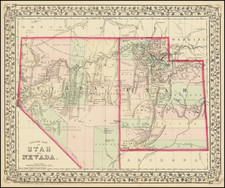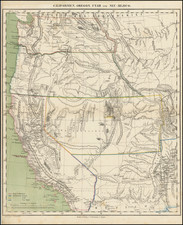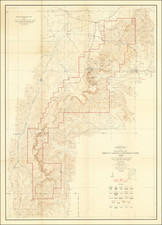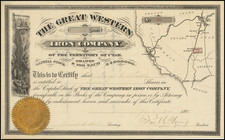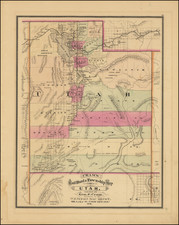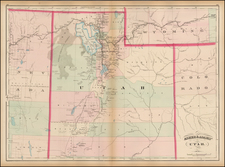Early and highly detailed map of Salt Lake City, colored by subdivisions.
The map extends form the Fort Douglas Reservation and Emigration Canyon Creek in the east to El Dorado Plat, centered on the Jordan River. The map shows Street Railways, Ward Boundaries, Plat Boundaries, Original Subdivisions, rivers, lakes, parks, a horse racing track, the Morman Temple and a number or Rail lines (Utah & Nevada, Denver & Rio Grande Western, Utah Central, Salt Lake & Douglas, etc.).
This highly detailed map was apparently issued as part of the publicity efforts of the Rio Grande Western Railway, whose line ran through Salt Lake City. About this time the railroad published numerous printed promotionals for Salt Lake City as well. The map closely documents the progress made in establishing the City since its founding forty years previously, although development is still confined to the east side of the Jordan River. The map bears the promotional imprint for Shiley, Groshell & Co., Real Estate Brokers.
In addition to the present map, publisher W. H. Whitney produced maps of Oregon, Washington, and Colorado in the late 1880s and 1890, and contributed to the 1883 atlas of Union & Confederate Campaigns. Regarding engravers Everts & Howell, Tooley notes that Louis H. Everts was in business for many years under a confusing array of company names and combinations.
Simon Mackie's map is one of the earliest large format maps of Salt Lake City, preceded only by the much smaller Weller (1863) and B.A.M. Froiseth (1870) inset maps and large format maps by J.L. Burns (1871), Browne & Brooks (1888). The map is of the utmost rarity. OCLC locates only one example in (Brigham Young University).
The first permanent settlements in the valley date to the arrival of the Latter-day Saints on July 24, 1847. Four days after arriving in the Salt Lake Valley, Brigham Young designated the site for the Salt Lake Temple, intended to be the third temple of The Church of Jesus Christ of Latter-day Saints, to replace the abandoned Kirtland Temple in Ohio and Nauvoo Temple in Illinois.
The Mormon pioneers organized a new state called Deseret and petitioned for its recognition in 1849. The United States Congress rebuffed the settlers in 1850 and established the Utah Territory, vastly reducing its size. Great Salt Lake City replaced Fillmore as the territorial capital in 1858, and the name was subsequently abbreviated to Salt Lake City.
Disputes with the federal government ensued over the widespread Mormon practice of polygamy. A climax occurred in 1857 when President James Buchanan declared the area in rebellion after Brigham Young refused to step down as governor, beginning the Utah War. A division of the United States Army, commanded by Albert Sidney Johnston, later a general in the army of the Confederate States of America, marched through the city and found that it had been evacuated. This division set up Camp Floyd approximately 40 miles (65 km) southwest of the city. Another military installation, Fort Douglas, was established in 1862 to maintain Union allegiance during the American Civil War. Many area leaders were incarcerated at the territorial prison in Sugar House in the 1880s for violation of anti-polygamy laws.
The LDS Church began their eventual abandonment of polygamy in 1890, releasing "The Manifesto," which officially suggested that members obey the law of the land (which was equivalent to forbidding new polygamous marriages inside the U.S. and its territories, but not in Mormon settlements in Canada and Mexico). This paved the way for statehood in 1896, when Salt Lake City became the state capital. The First Transcontinental Railroad was completed in 1869 at Promontory Summit on the north side of the Great Salt Lake. A railroad was connected to the city from the Transcontinental Railroad in 1870, making travel less burdensome.









